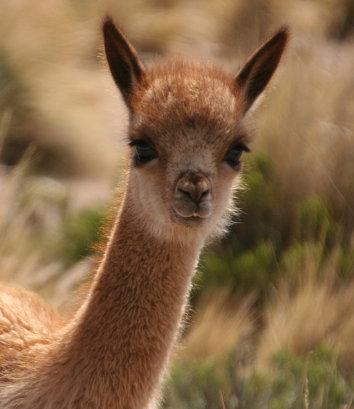To Blend? Or Not To Blend? By Gabrielle Menn
It is an interesting quandary. Interesting, indeed. “As we go about the room, please introduce yourself and your experience with alpaca or what you have heard about it.” The responses from kni�ng guild members entwined around a similar theme. “It’s so silky so�! But … I kni�ed a scarf, washed it, hung it on my towel bar to dry, and it grew six more inches.” “My son wanted me to knit him a pair of alpaca socks. It was the first �me that I ever kni�ed socks. They were a great fit the first �me he wore them, but the opening stretched so much that they won’t stay up and the heel was so floppy that they don’t fit in his shoe. I tried gently washing them hoping that they’d shrink a li�le bit back into place, but then the length of the foot was too short. It was a disaster.” The stories of saggy sweater elbows, crew neck collars that became scoops, waist lengths that became hip length, had me cringing at my own early experiences of exploring the fleeces off our first alpacas. Twenty-plus years ago, when no mill that I contacted could process 100% alpaca, I was disappointed at the idea of blending 20% wool with my precious exo�c alpaca. I sold my medley of sheep breeds and invested in my first merinos. “If I have to blend it, I’m going to blend it with the best.” As I sit at my desk typing this today, I’m laughing at my formerly purist self. Those 80% alpaca 20% merino sweaters that I made with those yarns are s�ll precious treasures in the wardrobe, with necks, elbows and waistlines s�ll in place. The socks I kni�ed with those blended yarns lasted six seasons before I finally wore holes in the heels.
I had become caught up in the alpaca marke�ng claims of the day without having the science to support those claims. “Warmer than wool.” “So�er than cashmere.” Alpaca was touted as the most superior and versa�le fiber known to man. So why would we ever want to blend it with something inferior?! When asking alpaca breeders their opinion of wool, the comments are generally nega�ve: “it’s scratchy”, “it has to be washed first”, “it’s coarse.” Okay. Fair enough. If all I had ever been exposed to were old army surplus blankets made from short, high micron wool, my impression would also be nega�ve. However, do a side-by-side comparison of histograms of my average merino to that of the average alpaca and my merino will win out every �me in fibre diameter (micron), standard of devia�on, and comfort factor. In an effort to support the emerging alpaca coopera�ve, I purchased a sleeveless top: 60% baby alpaca 40% acrylic. I remember thinking, “Why?! Why would anyone blend natural with plas�c?” The short answer is money. Acrylic is much cheaper to produce and to process allowing for significant cost savings while s�ll being able to demand a high garment price for spor�ng the name “alpaca” on the label. Here’s the rest of the story on that sleeveless top: I was wearing that top on the morning of the busiest fibre show in my region. Half an hour before the gates opened to the public, I was weighing out packages of angora rabbit fibre in my booth. I heard an explosion and immediately sparks and embers rained down on me. Because I was leaning over the scale on my table, my back was their target, and then I could feel the burning. My ins�nct was to remove my body from the immediate danger and then to “stop, drop and roll”. As I laid on the floor 6










